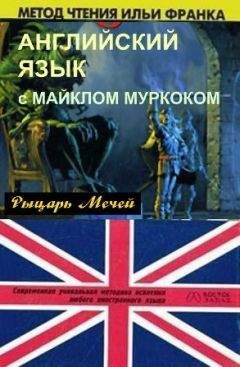Нина Пусенкова - Английский язык. Практический курс для решения бизнес-задач
Calculating total shareholder return over a three-year period to smooth out short-term fluctuations in the stock markets;
Using a comparative peer group of companies (against whom they measure their relative TSR performance). This group includes the major six key players within the oil industry – ExxonMobil, Shell, ChevronTexaco, TOTAL, ENI and Repsol YPF.
– TSR has been adopted internally as a way of driving business performance. This has been achieved through the use of two additional performance measures, earnings growth coupled with return on capital employed. By setting business unit targets based on both of these measures, managers need to deliver growth in earnings and an increasingly effective utilization of the assets within their business. Success with these parameters should translate into improved TSR.
– The organizational structure is deliberately flat and is geared towards effective management and delivery against these key targets. There are approximately 150 business units in BP, each on average with around $0.5 billion in capital employed. This is small enough to enable the CEO, if he wants to communicate an important message, to bring together all the managers of the business units into one room if necessary.
– The business units within BP also compete against each other for capital allocation. Peer group results are regularly reported through BP’s financial systems. This internal competition also drives selective investment into business projects that generate the best shareholder value in the medium to long term.
– The remuneration of the management team is heavily dependent on their relative performance against demanding three-year TSR, earnings growth and return on capital employed targets. It is not enough for managers to deliver TSR, earnings growth or ROCE in isolation. To earn the maximum award they have to deliver all three and they have to outperform their peer group. Performance below the peer group median results in no award. The remuneration contract of BP’s executive directors ties as much as 70% of their earnings to these factors so they really do bear similar risks to the shareholders for whom they act. The contracts of all other senior managers are similarly structured to reflect both their own targets and the company’s results relative to its peers.
BP also recognizes the need to manage effectively its communications with journalists and the investment community. Peter’s team actively monitors the information that is currently available about BP within the investment community. Often analysts send drafts of their reports and models to the company for comment. The team reviews these to correct any factual errors but they do not comment on the broker’s recommendations. BP is also in regular contact with large institutional investors, such as Fidelity and Merrill Lynch Asset Management, who by virtue of the amount of their funds under management can make a significant difference to BP’s share price performance relative to its competitors within the industry.
This BP case study highlights an important truth about managing for shareholder value. It is not sufficient for companies merely to convey to investors messages about shareholder value. They must also back up those messages with a real implementation of practical measures and actions designed to create and deliver that value consistently.
Source: G. Ashworth, P. James, Delivering Superior Shareholders Value, 2001
Essential Vocabulary
1. rationale n – логическое обоснование, основная причина, подоплека
2. cost of capital – стоимость капитала
3. debt capital – заемный капитал
4. value-based management – менеджмент, основанный на ценности
5. peer n – ровня, равный, сопоставимый; пэр
6. underperformance n – результаты деятельности ниже возможных или ниже рынка
underperformer n – юридическое или физическое лицо, показывающее результаты деятельности ниже возможных или ниже рынка
underperform v – показывать результаты деятельности ниже возможных или ниже рынка
7. tier n – эшелон, ряд, слой, уровень, ярус
8. net present value (NPV) – чистая приведенная ценность
9. receipt(s) n – расписка, денежные поступления, платежи
10. surplus n – избыток, излишек, активное сальдо, профицит
11. discount rate – ставка дисконтирования
12. total shareholder return (TSR) – суммарная доходность акционеров
13. economic profit – экономическая прибыль
14. appreciation n – высокая оценка, признательность, оценка по достоинству; повышение цены, удорожание, повышение курса (валюты или акций)
appreciate v – ценить, оценивать по достоинству, хорошо разбираться; повышаться (о курсе валют или акций)
15. dividend yield – дивидендная доходность
16. deduction n – вычет, вычитание
deduct v – вычитать
deductible a – подлежащий вычету (напр. для целей налогообложения)
17. investor relations – отношения с инвесторами, работа с инвесторами
18. fluctuation n – колебание
fluctuate v – колебаться
19. peer group of companies – группа равных (сопоставимых) компаний
20. flat a – плоский (напр. налог, структура компании); стандартный; разовый
21. outperformance n – результаты деятельности выше ожидаемых или выше рынка
outperformer n – юридическое или физическое лицо, показывающее результаты деятельности выше ожидаемых или выше рынка
outperform v – показывать результаты деятельности выше ожидаемых или выше рынка
22. investment community – инвестиционное сообщество
23. draft n – проект, план, набросок, эскиз; чек, тратта, получение денег по чеку; отбор, призыв, вербовка
draft v – делать эскиз, составлять план, законопроект; выделять, отбирать
24. institutional investors – институциональные инвесторы
Exercise 1. Answer the following questions.
1. Why should today’s business leaders be able to understand how to create, measure, manage and deliver shareholder value? 2. What does the term «cost of capital» mean? 3. What forms do returns to shareholders usually take? 4. Why is it undesirable for managers to irritate shareholders? 5. What is the essence of value-based management? 6. Why is shareholder value becoming increasingly popular? 7. What does NPV mean? 7. What should companies wishing to deliver and maximize shareholder value focus on? 8. What are the best-known metrics of created shareholder value? 9. What is BP famous for and how does it consistently manage to be near the top of the shareholder value league tables?
Exercise 2*. Which of the following statements are not correct and why?
1. Most organizations successfully translate the aim of delivering shareholder value into reality. 2. Today’s business leaders must be able to understand how to create, measure, manage and deliver shareholder value. 3. The returns to shareholders can take the form of dividends and growth in the value of their shares. 4. Lloyds Bank adopted a value-based management approach in the mid-1980s and, as a result, its shares showed significant underperformance in relation to its peers. 5. Shareholder value became a business mantra in the 1990s, but its popularity is likely to fade in the new millennium. 6. What gets measured gets done. 7. NPV represents the «present value» of the future cash flows. 8. It is possible for investors to study the accounts of companies and to infer from them whether value has been added or destroyed. 9. BP is rarely able to deliver high shareholder value. 10. Absolute growth in TSR is deemed by BP to be sufficient. 11. The organizational structure of BP is deliberately flat. 12. The business units within BP compete against each other for capital allocation. 13. The system of remuneration in BP is such that it is enough for managers to deliver TSR, earnings growth or ROCE in isolation.
Exercise 3*. Find terms in the text that match definitions given below and make sentences of your own with each term.
1. an oral, written, or signaled communication sent from a person to another; an inspired communication to be delivered to the world
2. minimum level of return required by the providers of capital
3. the proportion of profit or gain made by a corporation, which is divided among the stockholders
4. the act or manner of exhibiting an art, skill or capacity; the degree to which anything functions as intended
5. one of the same rank or qualities; an equal
6. the «present value» of the future cash flows less the original cost of the investment
7. an increase in value or worth
8. a measure of return (or profit) earned by the company in a period after deducting a charge for the cost of capital employed within the business
9. a market where securities are traded
Exercise 4*. Fill in the blanks using terms given below.
Value-based Management inThyssenKrupp Group
The ThyssenKrupp Group is managed and controlled on the basis of an Economic Value Added («EVA») management system. The key goal of this system is to maintain continuous increases in……… by focusing on business……… which – with respect to their performance – are among the best………. To achieve this objective, an integrated controlling concept is………. It allows for……… controlling and coordination of activities of all segments, supports………. responsibility and promotes overall transparency.
By taking timely appropriate actions, the integrated controlling concept realizes the increase of corporate value by bridging operating and strategic……….. between the actual and……… situation. The prerequisite for this concept is the existence of high quality operational and strategic reporting systems for the accounting of actual and………. results as well as internal and external…………
In the ThyssenKrupp controlling concept, strategic and operational elements are………. to timely reporting which is accompanied by regular………. communication. The concrete elements of this strategy are: economic value added performance measures and active portfolio management.
The central performance measures are return on capital employed (ROCE) and Economic Value Added (EVA). These two ratios reflect the……… of capital employed in the form of a relative quantity (ROCE) and an absolute value (EVA).
ROCE is calculated as follows:
ROCE = incomebeforeincometaxes, minority interest and interest/ capital employed
EVA is computed as the difference between ROCE and the…………., multiplied by the capital employed. Additional value is created only if the ROCE exceeds the weighted cost of capital. Accordingly, cost of capital reflects the minimum acceptable……….. In addition, individual target……….. is agreed for individual activities, which are based either on the best competitor or on an inter-industry………. This management and controlling system is linked to the………. system in such a way that the amount of the performance-related………. is determined by the achieved EVA.
ThyssenKrupp’s active portfolio management directly follows the result of the analysis of the……….. measures. It involves structural measures which are principally of a strategic nature, including the selection and………. of………… with which the targeted increases in EVA or value are to be realized, as well as the timely and profitable………… from activities which do not achieve adequate increases in EVA. These measures further aim at creating new operating activities through a favorable………. in evolving markets. For the Group as a whole these measures are of particular importance when it comes to establishing a balance between………. and…….. This is a basic prerequisite for……… continuity and sustained growth in………. activities.
Source: ThyssenKrupp Group Annual Report 2004/2005, p. 91—93, www.thyssenkrupp.com
Terms:
dividend, bonus, budgeted, entry, corporate value, cash providers, linked, profitability, business units, rate of return, segments, performance, expansion, withdrawal, core, worldwide, applied, goal-driven, decentralized, gaps, earning power, target, reporting, proactive, cost of capital, benchmark, remuneration, value generators
Exercise 5. Translate into English.
Value-Based Management и показатели стоимости
Value-Based Management – концепция управления, направленная на качественное улучшение стратегических и оперативных решений на всех уровнях организации за счет концентрации усилий всех лиц, принимающих решения, на ключевых факторах стоимости. Из всего множества альтернативных целевых функций в рамках концепции VBM выбирается максимизация стоимости компании. Стоимость же компании определяется ее дисконтированными будущими денежными потоками, и новая стоимость создается лишь тогда, когда компании получают такую отдачу от инвестированного капитала, которая превышает затраты на привлечение капитала.


